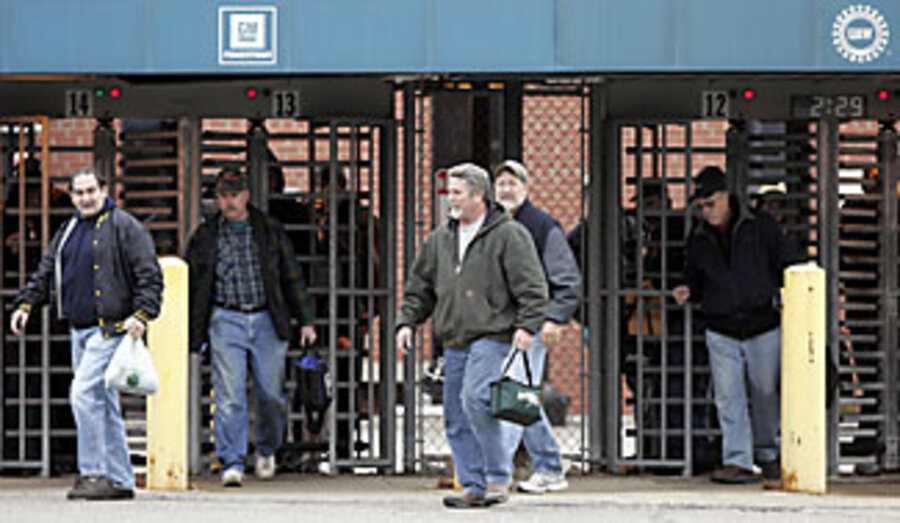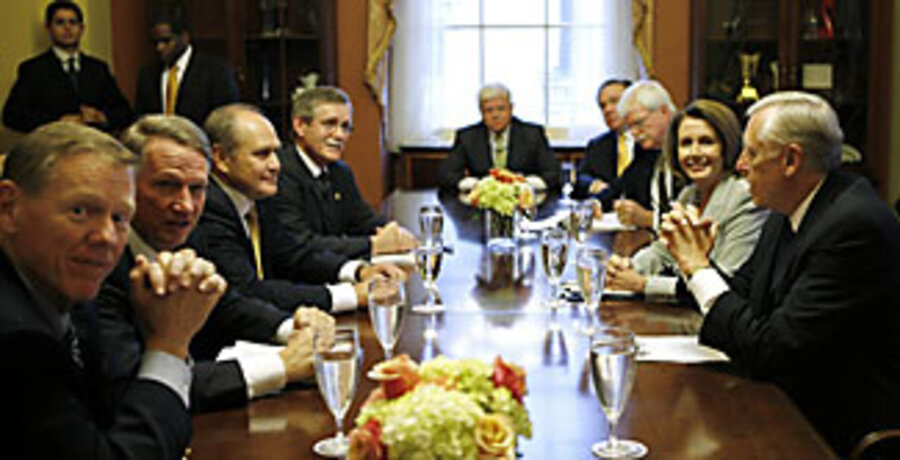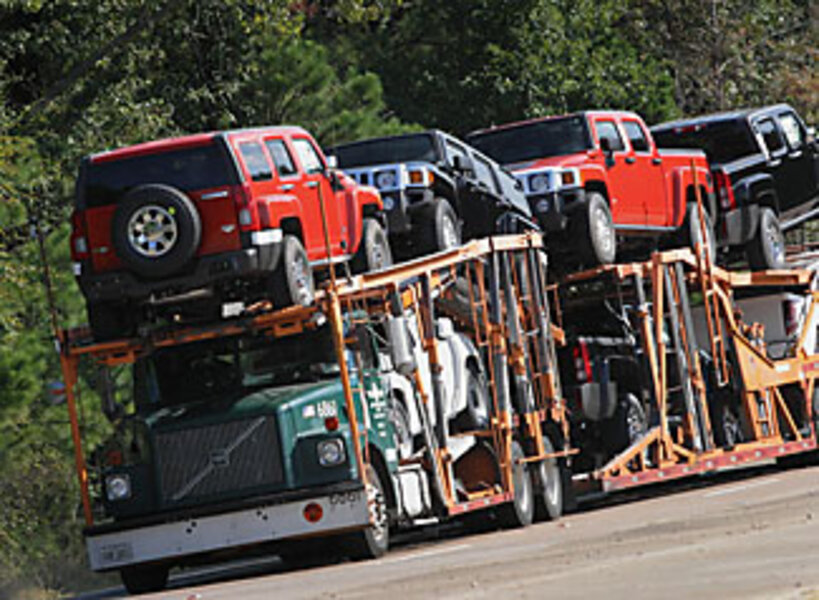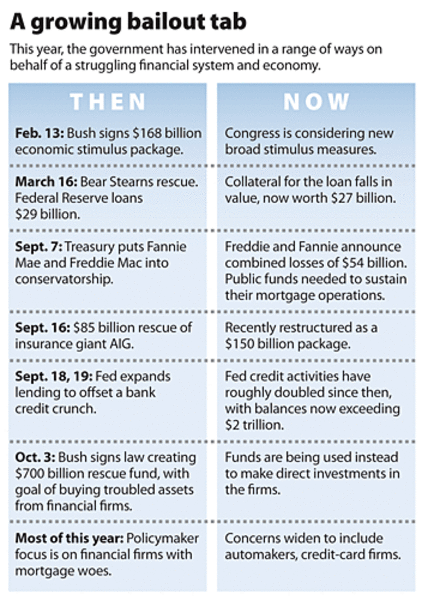Where should bailout dollars go?
Loading...
At first, the bailouts were only for major financial firms, but a souring economy has created an expanding list of potential recipients for policymakers to consider.
Assistance for automakers. New mortgage rescues targeted not at lenders but at struggling homeowners. Aid for cities and states that are running short of cash.
Those are some of the sectors where new federal billions could be deployed in coming months. The scope of rescue programs appears likely to widen even as the tab for the core bailout – the one centered on banks and other financial firms – also keeps rising.
But federal resources aren't infinite. With the size and shape of assistance rapidly evolving, how the money is managed could significantly influence the depth and duration of the current slump.
That's one reason why the tone of economic hearings and debates in Congress remains fierce even with Election Day in the rearview mirror.
The challenge ahead: How to make each dollar of intervention go furthest to restore the confidence of private-sector businesses and offset consumer weakness caused by a poor job market and falling home values.
"You have to think big at this point," says Tim Duy, an economist at the University of Oregon in Eugene. "You have to think big stimulus [for the economy], and you have to think big financial restructuring."
But even while arguing for significant new interventions, he's adamant that the next stages of an economic rescue must involve careful choices.
Those choices have become a matter of intense debate on Capitol Hill.
Debate over helping automakers
Exhibit A this week is the auto industry. Many Democratic lawmakers want to extend a $25 billion loan for use by General Motors, Ford, and Chrysler.
GM, which many analysts had considered the strongest of the US automakers, now faces serious risk of bankruptcy, and all three are burning through cash at a dangerous pace. Last month, sales of new cars and trucks in the US sank to their lowest level in more than a quarter century, running at an annualized pace of just 10.5 million vehicles.
But Republicans are wary of expanding the circle of bailouts beyond the financial sector, which is considered special because of its key role as a credit provider to the whole economy. The rift among lawmakers reflects a divide that also exists among economists. Even many who support extending aid to Detroit call for strings to be attached – extreme makeovers to make the carmakers more viable.
"If those contingencies aren't there, then all you do is perpetuate the model ... of an industry that's not structured properly for the modern era," says Brian Bethune, an economist at IHS Global Insight in Lexington, Mass. "That is a recipe for a bigger disaster down the road."
A carmaker bankruptcy could cause more unemployment in an already weak job market. So some federal lifeline may be warranted, Mr. Bethune says.
But a risk is that, as private sector firms angle for possible federal help, normal business decisions in the private sector could be altered or delayed.
Moreover, if jobs are the goal, then Bethune says an equal argument can be made for investing in "winners," rather than firms at risk. "Why wouldn't we take the leading technology companies or solar energy companies or wind turbines, and invest in those?" he asks.
For its part, the Bush administration has been contending that a $700 billion rescue fund, set up in October, should not be extended to industrial firms such as the automakers.
Treasury's change in approach
Even if that program remains focused on supporting the health of financial firms, its approach has become the focus of another debate.
Initially, the program was set up so that the Treasury could buy "troubled assets" such as mortgage securities from banks and other firms. The idea was that by weeding out the bad assets, investor confidence and normal functioning of the financial system would recover.
Facing criticism and complexities regarding this plan, the Treasury shifted gears and has been using the money to invest directly in banks. The government has committed all but $60 billion of an initial $350 billion that Congress has allocated to the program.
Nine large banks have already gotten big capital infusions. Now, many smaller banks are scrambling for their share of the rescue funds. Many filed requests Friday in response to a Treasury deadline.
Bethune says the new approach stands a good chance of working, as the Treasury puts capital to work in the strongest banks – and prods them to buy weaker banks that might otherwise fail. Already, some large mergers have occurred along these lines.
"If they continue with that game plan, I think it'll work," Bethune says.
But others worry that capital infusions alone will not solve the problem. The bad assets remain hidden, whereas transparency and purging of losses is traditionally a step toward ending financial crises.
"The longer it takes you to solve the problem, the more costly it is," says Vincent Reinhart, an economist at the conservative American Enterprise Institute, citing the history of financial crises.
Mr. Duy, the economist in Oregon, argues that the Treasury should still pursue the idea of buying the troubled assets.
The Treasury is also working on plans, outlined last week, to extend help to firms that provide consumer loans such as through credit cards.
Duy says a new and large economic stimulus measure is also warranted. This could encompass aid to cities and states, extended benefits for the unemployed, and investments in infrastructure projects to boost long-term growth.
[Editor's note: The original version misidentified the Chrysler chairman in the second photo.]








